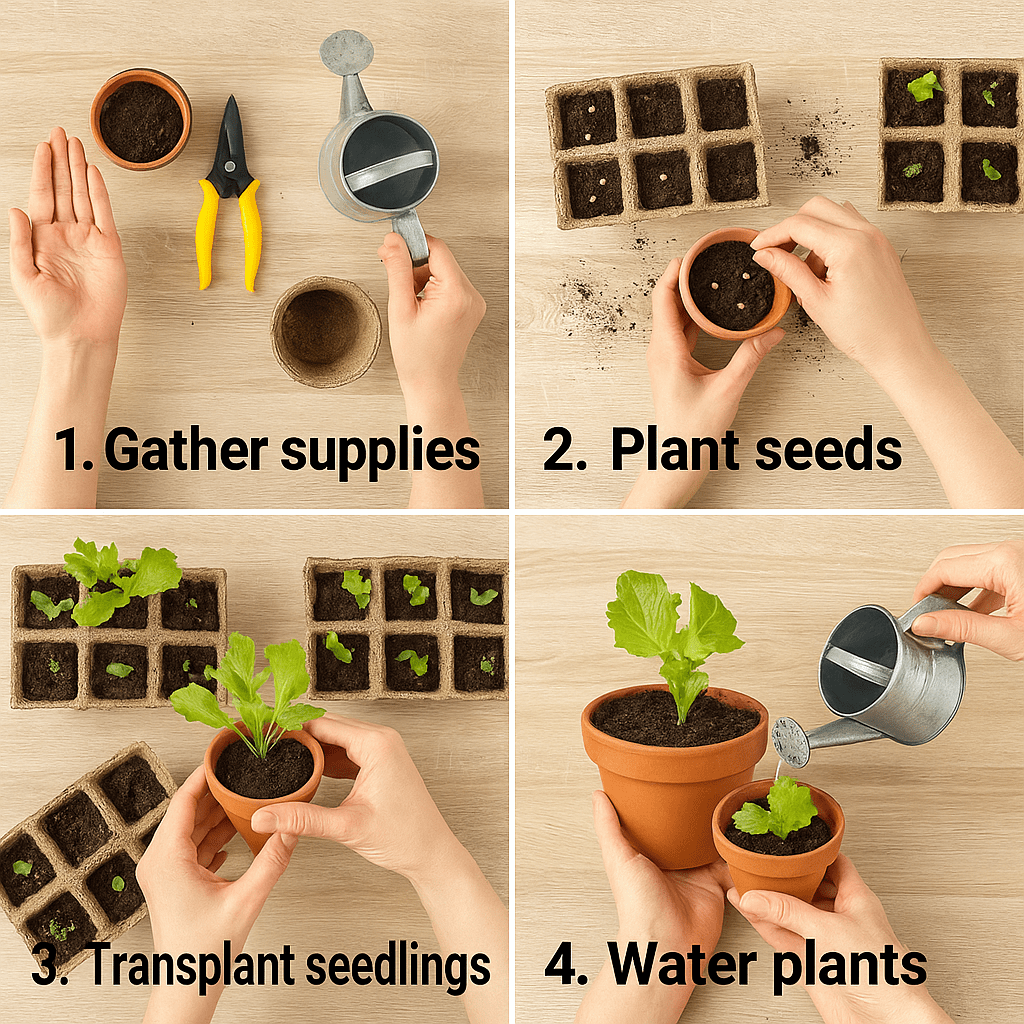Starting a vegetable garden might feel overwhelming, but with the right guidance and some easy gardening tips for beginners, anyone can grow fresh vegetables from scratch. Whether you have a backyard or just a few containers on a balcony, these tips will help you build confidence, avoid common pitfalls, and enjoy the rewarding experience of home gardening.
Why Start a Vegetable Garden?
Growing your own vegetables offers numerous benefits. You gain access to fresh, organic produce, reduce grocery costs, and enjoy a therapeutic outdoor hobby. For beginners, starting small with a few easy-to-grow vegetables helps build skills without becoming overwhelming.
Choose the Right Location
Look for Sunlight
Most vegetables need at least 6 hours of direct sunlight per day. Choose a spot that receives morning and afternoon light. Leafy greens like lettuce and spinach can tolerate partial shade.
Ensure Proper Drainage
Avoid areas where water pools after rain. Good drainage is essential to prevent root rot. Raised beds or containers can solve drainage issues in most cases.

Start with Easy Vegetables
Best Vegetables for Beginners
Here are some beginner-friendly choices:
- Lettuce – Grows quickly and can be harvested multiple times.
- Radishes – Ready in 25–30 days.
- Green beans – Low maintenance and highly productive.
- Tomatoes (in containers) – Choose dwarf or cherry varieties.
- Zucchini – Grows fast and yields generously.
Prepare the Soil
Test and Improve Soil
Use a soil test kit to check for pH and nutrients. Most vegetables prefer slightly acidic to neutral soil (pH 6–7). Mix compost or aged manure into the soil to boost fertility and texture.
Container Gardening Soil
For pots or planters, use a high-quality potting mix. Avoid using plain garden soil, which can compact and suffocate roots.
Water Wisely
How Much to Water
Vegetables typically need 1 inch of water per week, either from rainfall or manual watering. Water deeply and less frequently to encourage strong root growth.
Best Time to Water
Water early in the morning to reduce evaporation and fungal diseases. Avoid overhead watering if possible.
Use Mulch and Labels
Mulching
Mulch helps retain soil moisture, suppress weeds, and regulate soil temperature. Use straw, shredded leaves, or bark.
Plant Labels
Label your vegetables clearly. It’s easy to forget what was planted where—especially for seedlings.
Fertilize Carefully
When to Fertilize
Begin fertilizing once seedlings develop true leaves. Use a balanced, organic fertilizer according to package instructions.
Don’t Overdo It
Too much fertilizer can burn plants or promote leafy growth with fewer vegetables. Less is often more.
Protect from Pests
Natural Pest Control
Use neem oil, insecticidal soap, or companion planting (e.g., basil near tomatoes) to deter insects.
Barriers and Covers
Floating row covers or netting help protect against birds, rabbits, and insects without chemicals.
Harvesting Basics
Pick at the Right Time
Harvest vegetables when they reach full size and color. Don’t wait too long—overripe produce can be bitter or tough.
Use Clean Tools
Always harvest with clean, sharp tools to avoid plant damage and disease.
For a head start on your planting, learn how to begin with indoor seed starting in our guide: Starting Seeds Indoors – A Step-by-Step Beginner’s Guide.
Conclusion: Your Garden Journey Starts Now
With these easy gardening tips for beginners, you’re ready to grow your first vegetables and enjoy the satisfaction of harvesting your own food. Don’t worry if you make mistakes—each season brings new learning.
Save this guide for your next planting weekend! Share it with a friend who’s just starting out.
FAQ
Q1: How much space do I need to start a vegetable garden?
A: You can start in as little as 2–4 square feet using containers or raised beds. Vertical gardening also helps save space.
Q2: What is the best time of year to start?
A: Spring is ideal in most climates, but you can also plant cool-weather crops in fall or grow year-round in mild zones.
Q3: Can I grow vegetables indoors?
A: Yes, many leafy greens and herbs grow well indoors with proper lighting and containers.
Need quality gardening tools to kickstart your vegetable garden? Check out this selection of beginner-friendly gardening kits on Amazon.
Written by Kate Smith | Plant Care Enthusiast & Urban Gardener
